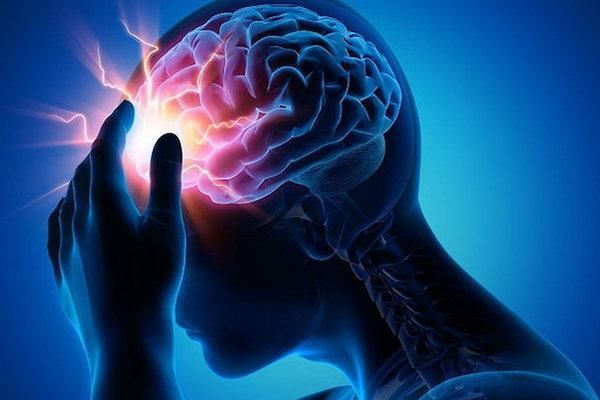Specific Treatments & Therapies
1. Clinical and Health-psychological Treatments
I have profound experience in terms of the following treatment approaches:
- Supportive talking therapy – The core application domains of the talking cure comprise anxiety disorders, depression, burnout and psychosomatic complaints or illnesses. The person-centered talking therapy is based upon the cornerstones of empathy and high regard for the patient. Empathy: The therapist tries to put himself/herself into the shoes of his/her patient’s perceived reality and point of view. To achieve this the therapist takes intonation, gesture and mimic of his/her patients into account – not only verbal expressions and content. High regard: The patient should feel totally accepted by the therapist and feel that he/she is fully appreciated and that this regard and appreciation does not depend on a specific favorable behavior. Such a trustful and autonomy-prevailing patient-therapist-relationship potentially shift the focus from problems to achievable solutions and to inherent strengths and resources.
- Treatments within the mindfulness-based Cognitive Behavior Therapy (CBT) framework, which has evidence-based efficacy in terms of anxiety disorders and depression. CBT comprises effective and alleviating methods based upon adaptive alterations of cognitive processing aimed at positively changing emotions and ultimately behavior:
- Cognitive restructuring of dysfunctional thoughts – “People are not disturbed by things, but by the views they take of them.” (Epictecus, 50 – 138 n. Chr.).
- Cessation of catastrophizing – the subjective appraisal of a situation, event or encounter is challenged: “Would it really be a catastrophe if the feared situation, event or encounter happened?”
- Reality testing – Fears and anxieties are examined with regards to their objective reality in terms of implied dangers and risks; for this purpose clients are asked to look for evidence for and against their potentially dysfunctional hypotheses.
- Behavior modification – Behavior which maintains depression and/or anxiety is analyzed and will be step by step replaced by more adaptive and well-being enhancing behavioral alternatives. Tendencies to fruitless rumination decline; social withdrawal can be tackled by resuming and enjoying social activities.
- Mindfulness – The technique – alongside other meditation and relaxation methods – significantly reduces stress-reactivity; mindfulness depicts an intentional and non-judgmental focus on the present moment. By thus connecting with such simple things we literally connect with and live for the moment, the presence and discover new peace, tranquility and serenity.

Systematic desensitization, Exposure and Confrontation: These techniques are specifically suitable for the efficient treatment of phobias and obsessive compulsive disorders.
This will be illustrated using the example of phobias which are predominantly attributable to maladaptive learning and conditioning: Someone has been stuck in a lift for around two hours. He experienced understandable feelings of anxiety and – after this incident – tried to avoid using lifts when possible. The avoidance behavior then increased his fear of using lifts, especially on his own. Unlearning, i.e. distinction, of this manifested lift phobia necessitates the long-term exposure to using lifts. It is crucial for the patient to ride a lift for long enough time, so long that he reaches the peak of anxiety and its corresponding somatic and mental symptoms – this is the only way to experience and learn that the anxiety will decline again over time! Thus the vicious circle of “fear of fear” can be broken through.
These principles of unlearning conditioned fear responses are applied to all phobias – e.g. arachnophobia (spider phobia), claustrophobia and also social phobia.
- Relaxation and Meditation Techniques, which can be learned fairly easily and then be applied on a day to day basis to achieve quick stress-relief, relaxation and tranquility. Long-term and regular relaxation and/or meditation exercises result in health-promoting physiological and psychological effects which facilitate coping with different stressors. The physiological effects comprise the activation of the parasympathetic nervous system: Reduction of heart rate, blood pressure and skeletal tonus. The main psychological effects are increase of serenity and tranquility and enhancement of mood. I focus on the application of the following techniques:
- Autogenous Training
- Progressive Muscle Relaxation (Jacobson)
- Tapping Acupressure (Emotional Freedom Technique)
- Mindfulness-based Meditation

- Couples counseling and mediation in partner conflicts – Likewise all psychological therapies, effective and successful couples counseling ultimately means help for self-help. Seeking this support requires courage of both partners – and committed efforts to rebalance their relationship. A good therapist will listen, enlighten and shed light on core elements of the dynamics underpinning your relationship. The conclusions and will be drawn by you and your partner.
Problematic communication patterns, dysfunctional and emotionally harming behavior or alienation and emotional blunting often develop after initially emotionally and sexually happy relationships. It requires self-reflection, dedication and patience to dismantle such maladaptive cognitive, emotional and behavioral patterns. Replacing these dysfunctional patterns step by step by adaptive and caring ones can be achieved by (re)gaining mutual respect, trust, tolerance and genuine mutually committed compromises. The change of perspective represents an efficient intervention in couples’ counseling: Taking your partner’s perspective increases the chances of rediscovering the assets of positive and open communication and interaction, intimate and trusting cohesion and fulfilling sexuality.
- Training of social and emotional competencies – the areas of emotional-social competencies address recognition of emotions and facial expressions, emotion-regulation (specifically functional coping with negative emotions such as anger), empathy in relating with others and prosocial behavior.

2. Brief Therapy
A plethora of psychological and psychosocial problems – acute challenges, crises and severe life events – imply the inherent risk to result in increased anxieties and depression. In many cases the psychological and psychosomatic complaints, however, can be prevented or alleviated by means of the Solution-focused Brief Therapies.
Brief Therapies address potentially underlying problems and then focus on suitable and relief-providing solutions. The underlying premise works with the evidence-based assumption that patients or clients possess all resources for problem-solution – it only requires a specific dialogue technique of the therapist to bring these resources to the fullest actualization.
Brief Therapy Interventions usually require 10 to 12 sessions – but can be extended if required. Time intervals between successive appointments increase with treatment progress; this reflects the increasing (regained) autonomy of the patient or client.
Brief Therapies are especially a treatment choice for light to moderate anxiety and depressive disorders, psychosomatic complaints and burnout.
3. Self-Control of potential Substance Abuse
The Concept of Self-Control of potential Substance Abuse is based upon the concept of “Control of self-induced Substance Consumption” („Kontrolle im selbstinduzierten Substanzkonsum“ [KISS]), developed in the 1980s by Professor Dr. Joachim Körkel. The treatment approach here is, however, augmented by the implementation of Brief Therapy tools.
With regards to alcohol abuse and potential dependency/addiction clients are required to prudently monitor their daily consumption, to reflect upon and assess the negative and positive effects of alcohol and, moreover, to identify potential risk situations and triggers.
The outlined concept of Self-Control comprises the therapy of substance-related addiction (specifically alcohol and tranquillizers – the latter only in cooperation with psychiatrists) and non-substance-related addiction (e.g. gambling and internet addiction).
A high degree of motivation is the key of success and will be assessed within the first two sessions.


